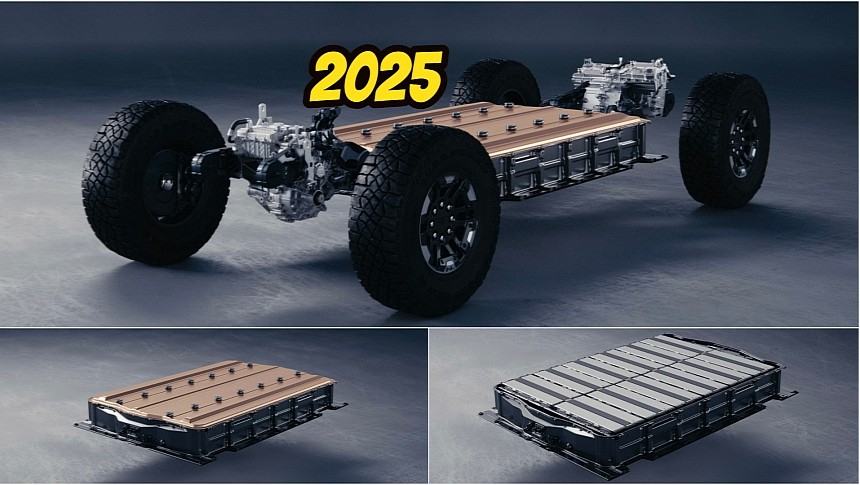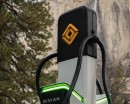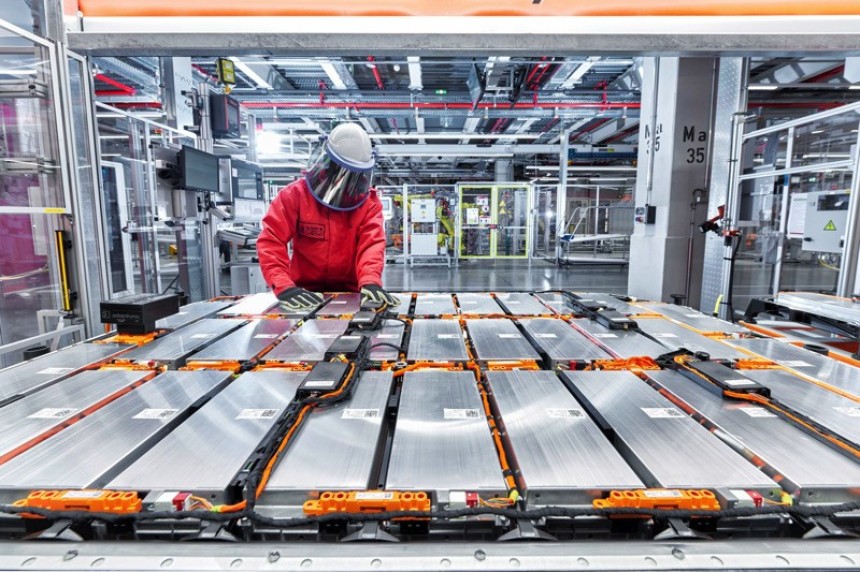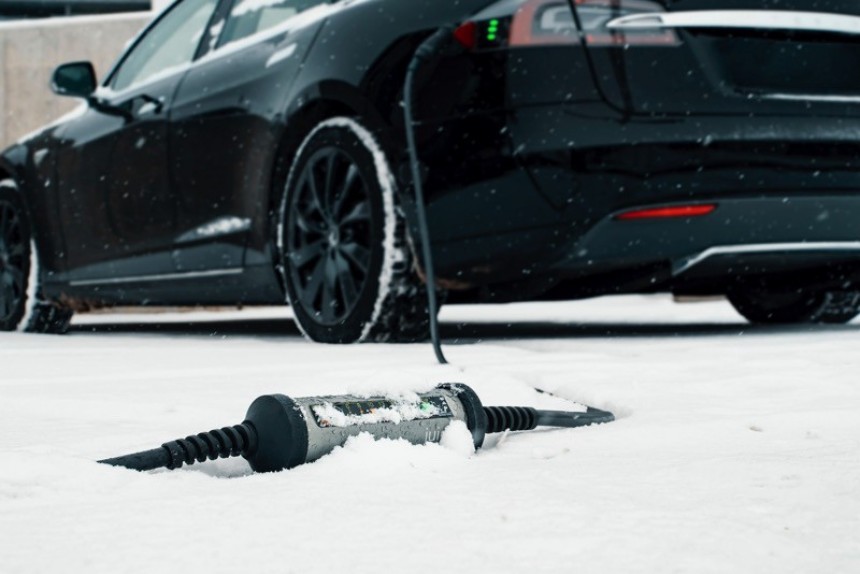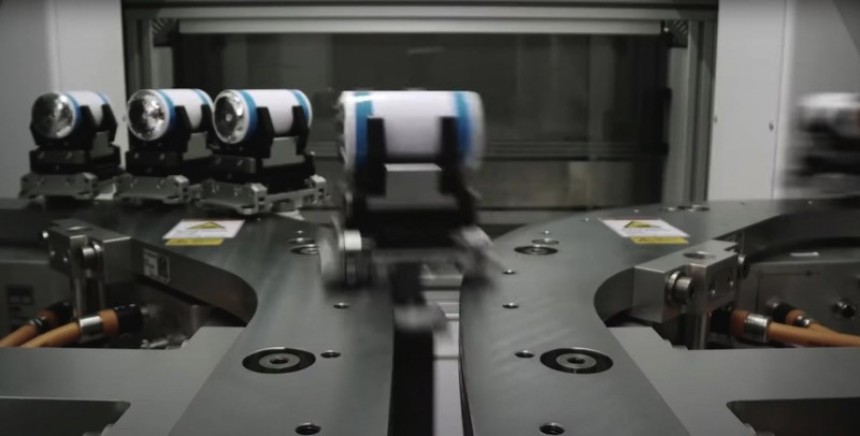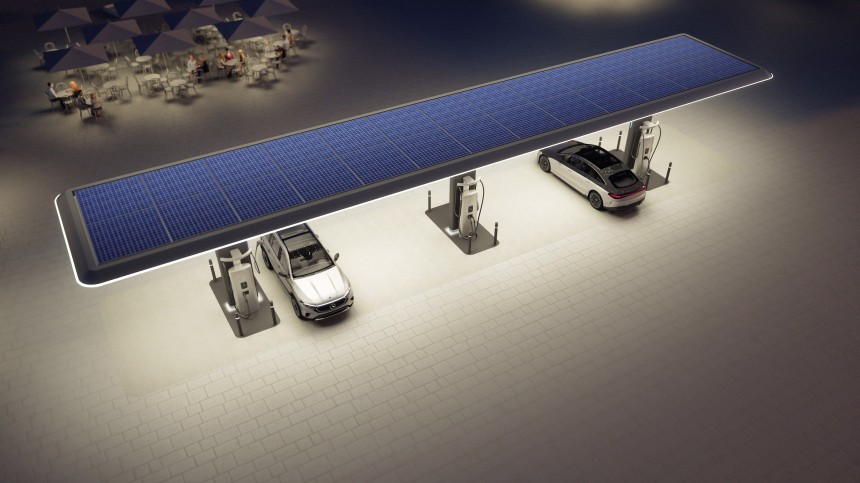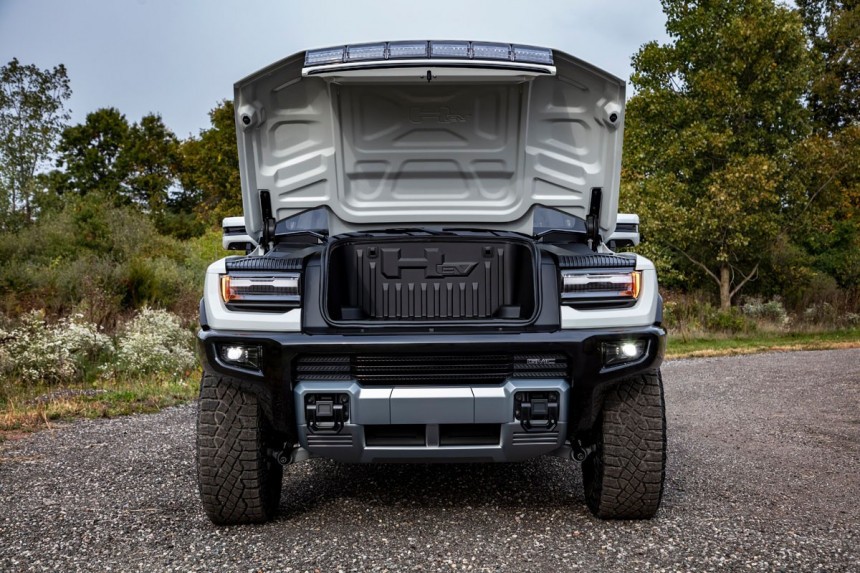We are responsible for leaving a better planet for future generations. That important mission includes fighting climate change. Global warming is nothing to be trifled with. One of the many solutions we have at our disposal is battery-electric vehicles (BEVs). Soon enough, people will have little reason not to consider buying one. Price will likely not be a barrier any longer. It's not us saying it, but reputable analysts. Here's what you need to know.
We have all heard it: electric vehicles (EVs) are great. They're quick. They don't require much maintenance. They're silent. They don't generate as much brake dust as internal combustion engine-powered cars. But above all the other positives, these autos do not emit harmful pollutants because they don't burn fossil fuels to empower our need for mobility.
But as often happens in the automotive industry, not everything is perfect. These past few years showed us that real-world experiences may vastly differ for customers despite BEVs' many advantages.
Tires may wear out faster. Range may also disappoint because the weather can severely impact efficiency. Then, the charging infrastructure might be problematic.
The high-voltage battery can also fail due to several reasons. Replacing it when the car's warranty is no longer valid can cost quite a lot. Insurers, for example, prefer to total some EVs than to pay for comprehensive repair.
That becomes understandable when you learn that Model 3 customers may spend around $15,000 for a refurbished battery or about $25,000 for a brand-new cluster of modules to put a new energy storage unit on the floor of their efficient sedan.
Besides possible costly issues, today's BEVs pose another challenge – charging. The infrastructure isn't mature enough to satisfy everyone's needs, and automakers are just now aligning their inlet design. The NACS port will rule North America from 2025, which gives Tesla renewed reasons to continue investing in the Supercharger network.
On the other side of the aisle, the utilities sector and decision-makers must contribute by ensuring enough energy (especially renewable!) for everyone to go around without having kWh prices go haywire.
However, looking at the bigger picture before focusing on the little things is important. Overall, BEVs are better for our communities. Were we to replace all the gas- and diesel-powered vehicles on the road today with zero-tailpipe emission models like the Mustang Mach-E or the Rivian R1T, the air would be much cleaner. Urban areas would also be more silent.
We are already on track to have a battery-electric vehicle become the world's best-selling car. The Model Y might achieve that performance if Tesla manages to convince even more people to join in on the zero-tailpipe emission fun. But that remains to be figured out next year.
The single, most pressing issue for automakers right now is that they cannot drop BEV prices low enough to make them instantly attractive. The non-facelifted Model 3 is a good example in this respect. Even though the unit is available at a fantastic price point and the lease deals are enticing considering today's auto market, people are not flocking to Tesla.
But in around two years, things might get even worse for Tesla. Automakers like BMW or Renault plan to bring completely new models to market that are built on spanking-new platforms.
However, Goldman Sachs clears the fog. The financial entity recently forecasted that high-voltage energy storage units could become a lot cheaper by 2025. That's exactly what needs to happen for BEVs to be more affordable. Given today's high interest rates and MSRPs, prospective buyers think twice before getting behind the steering wheel of a new car.
Estimates from last year showed that an energy storage unit accounted for almost half or more of the vehicle's retail price.
However, that is changing rapidly. Recent data crowdsourced by Benchmark Minerals shows that the cost of an EV's high-voltage battery no longer dictates the MSRP. For example, the ID.4's CATL-sourced 62-kWh battery represents 23.4% of the vehicle's cost, while Tesla's 100-kWh Panasonic-made energy storage unit put in the newer Model S is just 13.6% of the BEV's price.
We're already in a much-welcomed downtrend, but Goldman Sach's research reveals that the average cost of a kWh could drop to $99. When writing, lithium iron phosphate (LFP) batteries are already at this price point. However, this type of chemistry isn't liked by most automakers.
While it's safer and cleaner than nickel manganese cobalt (NMC) cathodes, an LFP battery has a lower energy density. You need more cells to store the same amount of electricity as an NMC energy storage unit. That translates into increased weight and more occupied space, which BEV makers don't want because it can affect efficiency and lead to accelerated wear and tear.
Still, Goldman Sach's assessment is good, if not great news.
The same source states that a yearly 11% battery pack price reduction should help automakers bring competitively priced BEVs to the US, Europe, and Asia. The latter might move faster than the others because China is fully involved in battery manufacturing and mining for raw materials.
Shorter supply chains and plants churning out modules like there's no tomorrow are enabling Chinese automakers to come up with every car they can. That includes even coupes, which aren't available to Europeans or Americans yet.
Now, we can't 100% confirm that automakers will discount their vehicles as battery packs become cheaper. But this whole scenario allows room for more competitive pricing. Tesla showed everyone just how merciless the rivalry can be when demand drops, and production is ramped up. We could be in for a treat as retail buyers. Fleet customers could also score some interesting deals.
There's also the federal incentives to think about. They will play a major role in making BEVs more appealing by supporting price reductions. Battery manufacturers receive $35 per kWh for cells and $10 per module (which usually contains around 60 or 70 cells) produced in the US. The Inflation Reduction Act (IRA) is already working its magic and attracting tens of billions of dollars in new investments.
Don't forget that, starting next year, the EV tax credit can be applied at the point of sale. If you're eligible and the vehicle of choice qualifies, a hefty $7,500 should stay in your pocket.
Then, there's the simplified vehicle layout. On average, a gas-powered car has seven times more components than a BEV. That's certainly helping in the cost-cutting department!
The future of the automotive industry is certainly interesting and maybe even a bit exciting. Clean drivetrains, the simplified skateboard architecture that worries auto workers, aggressive software development that stresses out engineers, high-power charging networks that add more tradespeople to the nation's workforce, and accelerated driving automation suggest that we're in for one hell of a ride.
The business landscape is changing as we speak. New supply chains are being established, and factories are retooled to manufacture vehicles with frunks.
Whether we will be able to keep our passion for cars alive or not, the world is going to move forward. Let's just hope that as BEVs become cheaper, automakers will remember to put the driver at the center of the development process. It would be a shame for all mainstream cars to become mere commuting appliances.
But maybe a boring future for gearheads will translate into cleaner air and quieter communities. We stand to get something good out of this transition either way.
But as often happens in the automotive industry, not everything is perfect. These past few years showed us that real-world experiences may vastly differ for customers despite BEVs' many advantages.
Tires may wear out faster. Range may also disappoint because the weather can severely impact efficiency. Then, the charging infrastructure might be problematic.
The high-voltage battery can also fail due to several reasons. Replacing it when the car's warranty is no longer valid can cost quite a lot. Insurers, for example, prefer to total some EVs than to pay for comprehensive repair.
Besides possible costly issues, today's BEVs pose another challenge – charging. The infrastructure isn't mature enough to satisfy everyone's needs, and automakers are just now aligning their inlet design. The NACS port will rule North America from 2025, which gives Tesla renewed reasons to continue investing in the Supercharger network.
On the other side of the aisle, the utilities sector and decision-makers must contribute by ensuring enough energy (especially renewable!) for everyone to go around without having kWh prices go haywire.
The pros outweigh the cons
Other studies have also pointed out that BEVs are heavier and may fill the air we breathe with decomposing tire compounds because they put more pressure on the rubber rings. These tiny particles can cause all sorts of health issues. Another red-hot problem is mining and the responsible sourcing of essential minerals used in batteries. Remember Thacker Pass?However, looking at the bigger picture before focusing on the little things is important. Overall, BEVs are better for our communities. Were we to replace all the gas- and diesel-powered vehicles on the road today with zero-tailpipe emission models like the Mustang Mach-E or the Rivian R1T, the air would be much cleaner. Urban areas would also be more silent.
The single, most pressing issue for automakers right now is that they cannot drop BEV prices low enough to make them instantly attractive. The non-facelifted Model 3 is a good example in this respect. Even though the unit is available at a fantastic price point and the lease deals are enticing considering today's auto market, people are not flocking to Tesla.
But in around two years, things might get even worse for Tesla. Automakers like BMW or Renault plan to bring completely new models to market that are built on spanking-new platforms.
Charging ahead
Initially, their 2025 target for introducing these new zero-tailpipe emission automobiles as built from the ground up BEVs felt like an arbitrary decision. It suggested that they needed more time to rival Tesla properly.Estimates from last year showed that an energy storage unit accounted for almost half or more of the vehicle's retail price.
However, that is changing rapidly. Recent data crowdsourced by Benchmark Minerals shows that the cost of an EV's high-voltage battery no longer dictates the MSRP. For example, the ID.4's CATL-sourced 62-kWh battery represents 23.4% of the vehicle's cost, while Tesla's 100-kWh Panasonic-made energy storage unit put in the newer Model S is just 13.6% of the BEV's price.
We're already in a much-welcomed downtrend, but Goldman Sach's research reveals that the average cost of a kWh could drop to $99. When writing, lithium iron phosphate (LFP) batteries are already at this price point. However, this type of chemistry isn't liked by most automakers.
While it's safer and cleaner than nickel manganese cobalt (NMC) cathodes, an LFP battery has a lower energy density. You need more cells to store the same amount of electricity as an NMC energy storage unit. That translates into increased weight and more occupied space, which BEV makers don't want because it can affect efficiency and lead to accelerated wear and tear.
Optimizing for the future
Prospective BEV buyers can keep their current vehicle or lease one for two years until cheaper and more capable cars come to market. The bank believes the prices of raw materials like lithium, nickel, and cobalt will drop quickly. It also thinks the metals' downtrend will represent 50% of the general decline.The same source states that a yearly 11% battery pack price reduction should help automakers bring competitively priced BEVs to the US, Europe, and Asia. The latter might move faster than the others because China is fully involved in battery manufacturing and mining for raw materials.
Shorter supply chains and plants churning out modules like there's no tomorrow are enabling Chinese automakers to come up with every car they can. That includes even coupes, which aren't available to Europeans or Americans yet.
There's also the federal incentives to think about. They will play a major role in making BEVs more appealing by supporting price reductions. Battery manufacturers receive $35 per kWh for cells and $10 per module (which usually contains around 60 or 70 cells) produced in the US. The Inflation Reduction Act (IRA) is already working its magic and attracting tens of billions of dollars in new investments.
Don't forget that, starting next year, the EV tax credit can be applied at the point of sale. If you're eligible and the vehicle of choice qualifies, a hefty $7,500 should stay in your pocket.
Then, there's the simplified vehicle layout. On average, a gas-powered car has seven times more components than a BEV. That's certainly helping in the cost-cutting department!
Gearing up for imminent change
What's for sure is that the more EVs we have on the road, the less we'll be reliant on what the Middle East and Russia are doing with the price of crude oil. Gas could become much cheaper as more drivers get behind the steering wheel of a BEV. That's yet another advantage of the transition to "green" drivetrains.The business landscape is changing as we speak. New supply chains are being established, and factories are retooled to manufacture vehicles with frunks.
Whether we will be able to keep our passion for cars alive or not, the world is going to move forward. Let's just hope that as BEVs become cheaper, automakers will remember to put the driver at the center of the development process. It would be a shame for all mainstream cars to become mere commuting appliances.
But maybe a boring future for gearheads will translate into cleaner air and quieter communities. We stand to get something good out of this transition either way.
